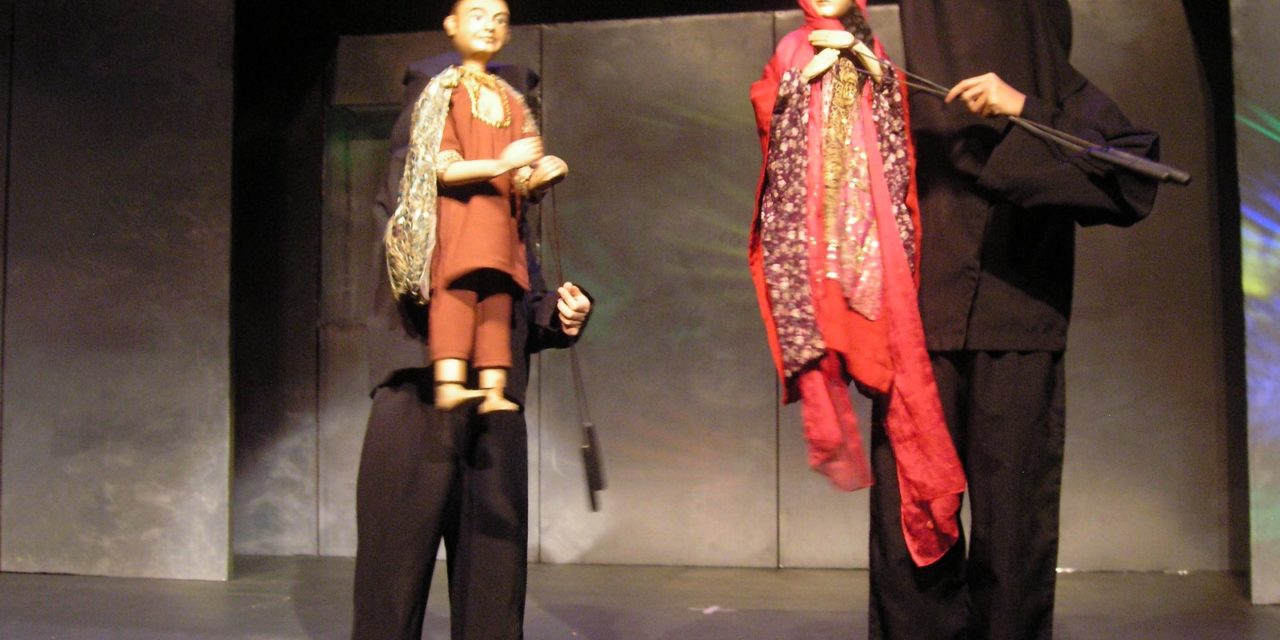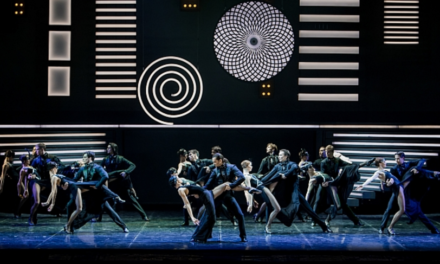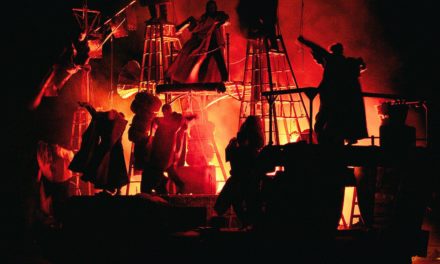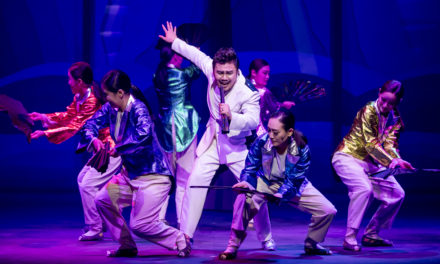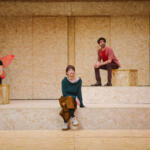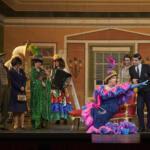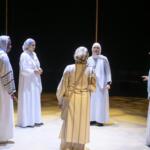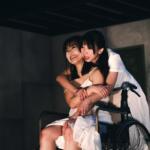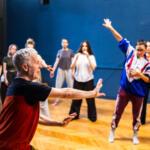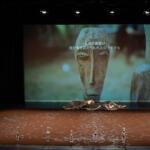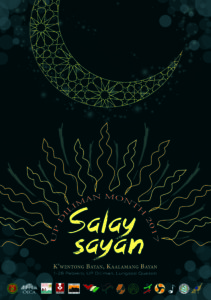
The Festival Poster
In celebration of the National Arts Month in February 2017, the University of the Philippines Diliman (UPD) through the Office for Initiatives in Culture and the Arts recuperates the kuwentong bayan (folk narratives such as epics, myths, legends, folk tales, etc.) as important repository of ideas, information and even knowledge through a festival billed Salaysayan: K’wentong Byan, Kaalamang Bayan (Storytelling: Folk Narratives, Folk Knowledge).
An oral tradition, kuwentong bayan is a narrative told from one generation to another during community ceremonies, rituals, and in everyday conversation and story-telling among a group of individuals. These are organized stories, which are often used to explain some aspects of traditions, norms and even histories. In folklore studies, the kuwentong bayan are means of artistic communications in small groups.
Composed of 7,107 islands and diverse ethno-linguistic communities, the Philippines is a repository of many kuwentong bayan, often revealing valuable information and insights about the different Philippine communities. Today, kuwentong bayan are not carefully given attention by the younger generation because these are often used as opposing features of modernity. At the same time, the hyper-reality of today’s generation paved the way for these kuwentong bayan to be categorized as superstition and often are attributed as fallacious narratives about the modern world.
However, various kuwentong bayan foster a shared set of perspectives, values, and histories. Through these communal tales, community members become connected to one another, to their ancestors, to their natural world, and to the larger society. In many instances, through the universal themes of these k’wentong bayan, a community may be connected to other cultures.
Salaysayan is envisioned to foster a deeper understanding of these narratives coming from different socio-historical and socio-cultural milieus; feature these narratives as important producers of knowledge; connect these narratives to the different narratives of nation-building and nationalism; and translate and experience these narratives into different art forms such as theatre, film, and visual arts.
The centerpiece of the festival is Sansinukob, an installation, interactive and performance exhibit featuring Philippine folk stories about the universe. Seven critically acclaimed visual artists Jun Yee, Gerry Leonardo, Rita Badilla-Gudiño, Leo Abaya, Leeroy New, Anton del Castillo and Reginald Yuson will interpret the seven layers of the cosmos according to the narratives of the different ethno-linguistic groups of the archipelago namely kawalan (nothingness), tubig-non (water world), idalwunon (underworld), lupa-on (world of the humans), kahinginan (air), ibabaw-non (intermediary between the gods and the humans) and langit-non (world of the gods). Sansinukob is a glimpse of the ethno-astrology and ancient cosmology of Philippine cultures. The artworks will be installed around the UP Lagoon area and the College of Mass Communication Hill.
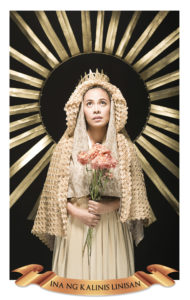
An adaptation of Goethe’s Faust by Rody Vera, directed by José Estrella for the Salaysayan Festival, UP’s celebration of the National Arts Month 2017 (Photo: Dulaang Unibersidad ng Pilipinas)
The festival will open side-by-side the launching of the interactive and performance exhibit on 1 February, 6 pm at the UP Lagoon area in front of the former UP Diliman Faculty Center through a simple but meaningful ritual-like ceremony featuring excerpts from a musical titled Kapud-uan o Kung Paano Umiral ang Pilipinas (Archipealgo or How the Philippines Existed) being written collaboratively by Dei Tiatco, Jem Javier, Ina Bolivar, Paolo Amascual, Gio Potes, Ivy Baggao, JC Bautista, Alice Gonzales and Eman Jamisolamin. The musical narrates the story of the mythical bird Manaul who carefully plotted the fight between Kaptan (the God of the sky) and Megwayan (the God of the sea) leading to the creation of the Philippine Archipelago; to the emergence of the Sikalak and Sikabay, the first man and woman; and to the peopling of the islands. Envisioned to be staged in 2018, excerpts from the musical will feature performances by the Madrigal Singers of the Philippines, The ConChords and the UP Filipiniana Dance Group.
Dulaang Unibersidad ng Pilipinas, UPD’s official performing arts group for the theater participates in the festival through the performance of Rody Vera’s adaptation of Goethe’s Faust under the direction of José Estrella. The play opens in heaven where the devil, Mephisto, wagers with God that he can corrupt his most virtuous servant Faust. What follows in the play is a series of events that questions our preconceived notions of justice, rationality, and morality.
In relation to Salaysayan, Faust is an inquiry on the relationship of religion and kuwentong bayan. Joining Vera and Estrella in the artistic team are Dei Tiatco, Jem Javier and Bryan Viray (Dramaturgy), Ed Lacson, Jr. (Set), Barbie Tan-Tiongco (Lights), Jon Lazam (Sounds) and Carlo Pagunaling (Costume). Featuring Neil Ryan Sese, Jack Yabut, Paolo O’Hara and Karen Gaerlan, the play will open on 15 February and will have a three-week run at the Wilfrido Ma. Guerrero Theatre.
On 18 and 19 February, the Teatrong Mulat ng Pilipinas restages Papet Ramayana (original staging in 2006) at the UPD Institute of Biology Auditorium. Papet Ramayana is Mulat’s interpretation of the Indian epic through Philippine puppetry.
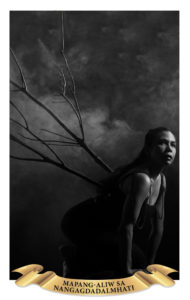
Mailes Kanapi as Mephisto in Dulaang Unibersidad ng Pilipinas’ production of Faust (Photo: Dulaang Unibersidad ng Pilipinas)
Primarily of Hindu origin, the Ramayana recounts the story of Rama (the seventh incarnation of the god Vishnu), his brother Lakshmana, his wife Sita, his opponent Ravana, a host of demons and an army of monkeys led by Hanuman. The performance is an attempt to reconnect Philippine folk narratives to its Asian roots. Unknown to many, the Mindanao in the south of the Philippines has a strong and colorful performance tradition almost similar to the kacek dance-theatre tradition in Indonesia. Music by Joey Ayala and book and lyrics by Amelia Lapeña-Bonifacio, Papet Ramayana is directed by Amihan Bonifacio-Ramolete.
On 23 February, UP Dance Company will stage a movement-theatre adaptation of the award-winning play Ang Unang Aswang (The First Monster) also by Vera. The play is Vera’s interpretation of the origin of the aswang (a mythical creature often associated with the “Philippine monster”).
Ang Unang Aswang is the story of an orphaned girl whose mother was killed during the revolution of the Filipino people against the Spaniards in the late 1900. The baby is discovered by a dog and a wild boar in the woods. The dog wants it for dinner but the wild boar saves her and eventually takes her as one of her babies. Years later, the baby turns out to be a beautiful and innocent girl. While hunting in the woods, the girl meets a stranger – the first human she encounters after having been kept in the wilderness for a long time. She falls for the stranger only to realize that the stranger is only deceiving her to sleep with him.
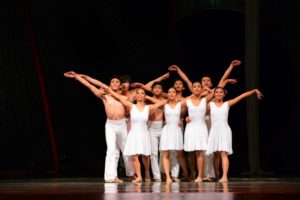
The UP Dance Company performing Flight for the National Arts Month in 2015 (Photo: UP Diliman Information Office)
Eventually, the love of the girl to the stranger grows every day and decides to leave the woods for the city to look for the stranger. She discovers the stranger is married and she begins to experience the cruelty of the city. Going back to the woods, she discovers she is pregnant with the stranger. In anger and frustration, she eats her own baby; hence, the birth of the unang aswang.
The dance performance of Vera’s play is choreographed and directed by JM Cabling and will run until 5 March at the Amphitheatre of the UPD College of Architecture.
Salaysayan will also have a mini film festival from 8 – 10 February at the Cine Adarna featuring local folk narratives in contemporary films; two mini-concerts featuring folk artists Noel Cabangon and Bayang Barrios (10 and 24 February at the UP Carillon); and a symposium on Philippine folk knowledge at the UP National Institute for Science and Mathematics Education Development Auditorium on 23 February.
For details on the festival, visit the official website of the Office for Initiatives in Culture and the Arts.
This post was written by the author in their personal capacity.The opinions expressed in this article are the author’s own and do not reflect the view of The Theatre Times, their staff or collaborators.
This post was written by Sir Anril Pineda Tiatco.
The views expressed here belong to the author and do not necessarily reflect our views and opinions.

